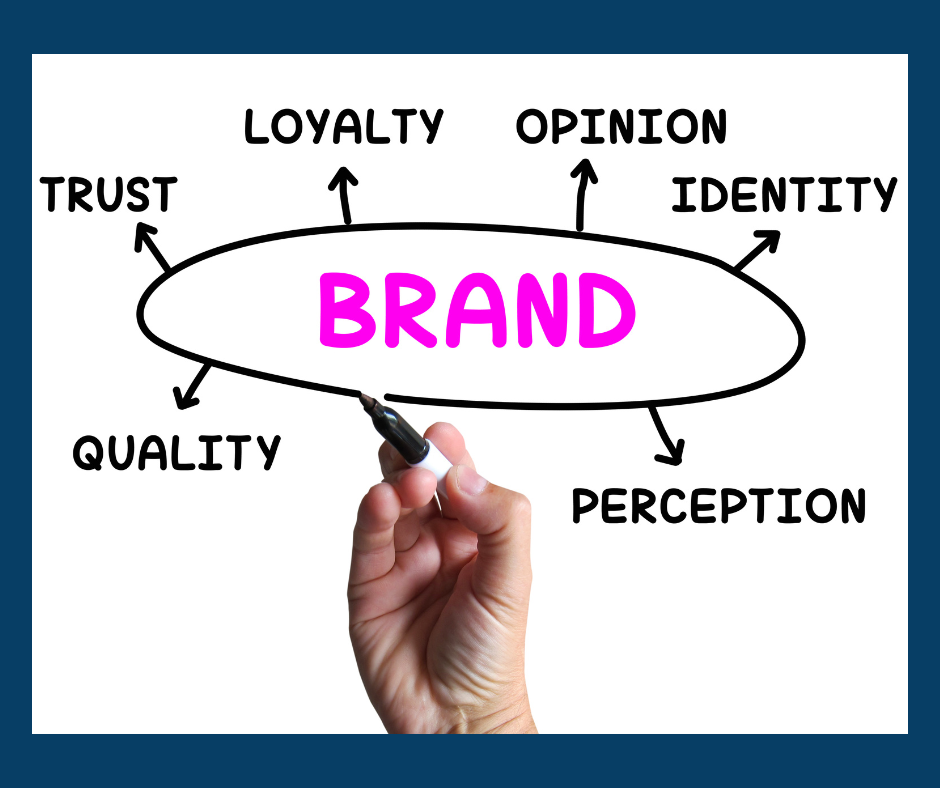In a rapidly evolving and competitive marketplace, establishing a strong brand identity has emerged as a crucial strategic asset to a business. A brand’s identity encapsulates its values, personality, and overall essence, creating a unique and memorable image in the minds of consumers. In a time where consumers are inundated with choices and information, a well-defined brand identity not only sets a company apart from its competitors but also fosters trust and loyalty.
Marketing and communications serve as a strong duo in shaping and projecting a brand’s identity to the target audience. These functions involve crafting compelling narratives, selecting appropriate channels, and employing tailored strategies to effectively convey a brand’s message.
What is Brand Identity?
Brand identity is the collection of all elements that a company creates to portray the right image of itself to the consumer. It is the way a brand presents itself to the world, and distinguishes itself from competitors. Brand identity comprises several components:
- Visual Elements:
- Logo: A unique symbol or design that represents the brand visually.
- Colour palette: Specific colours that are associated with the brand, used consistently across all materials.
- Typography: A distinct set of fonts and text styles used for brand communications.
- Graphics and imagery: Illustrations, icons, and photos that align with the brand’s image.
- Messaging:
- Tagline/slogan: A concise and memorable phrase that captures the brand’s essence.
- Brand voice: The tone, language style, and personality used in brand communications.
- Brand story: The narrative that encapsulates the brand’s history, mission, and values.
- Values and Brand Promise:
- The core principles, beliefs, and commitments that the brand stands for.
- The promise a brand makes to its customers regarding the value and experience they can expect.
A cohesive brand identity is crucial for businesses in a heavily competitive world. A consistent brand identity fosters recognition and builds trust among consumers, it conveys professionalism and reliability, it helps establish an emotional connection with the audience, fostering loyalty and affinity. It creates competitive advantage by setting a brand apart from competitors in a crowded marketplace, and it simplifies communication and marketing efforts.
Some examples of brands with strong identities include Apple, Coca-Cola, Nike. These brands have successfully integrated visual elements, messaging, and values into a cohesive brand identity, contributing to their immense success and widespread recognition.
What role does marketing play in Brand Identity?
Marketing plays a critical role in shaping and reinforcing a brand’s identity. It’s essential for creating brand awareness, influencing brand perception, and ensuring brand recognition.
Marketing strategies heavily influence how the target audience perceives a brand. Effective marketing communicates the brand’s values, mission, and unique selling propositions. Through various channels like advertising, content marketing, social media, and public relations, businesses can shape the way consumers see their brand.
Consistency in messaging and visual elements is key to creating a strong and clear brand identity. When consumers encounter a brand consistently across different touchpoints, they develop a sense of familiarity and trust. Visual elements such as logos, colours, fonts, and imagery should align with the brand’s values and message. A cohesive and consistent brand image builds credibility and makes the brand easily recognisable in a competitive market.
What role does communications play in Brand Identity?
Effective communication is essential for reinforcing a brand’s messaging and positioning. It involves consistently conveying the brand’s unique value propositions, values, and personality across all communication channels. Through clear and compelling messaging, a brand can imprint its identity in the minds of consumers, ultimately shaping how they perceive the brand and what it stands for.
Different communication channels, such as social media, public relations, advertising, and customer service, play a crucial role too. Social media allows brands to interact directly with their audience, showcasing their personality and engaging in real-time conversations. Public relations can help in managing the brand’s reputation and ensuring consistent and positive messaging. The choice of communication channels influences how the brand identity is presented and received by the audience.
Integrating marketing and communications for cohesive branding
Collaboration between marketing and communications teams is essential to ensure a unified approach toward branding. Both teams should work together closely, sharing insights, objectives, and strategies. A collaborative approach fosters better coordination, leading to a more coherent and impactful brand message across all touchpoints.
Strategies should align to convey a cohesive narrative that reflects the brand’s values, mission, and unique selling propositions. A unified strategy ensures that all communication channels echo the same brand essence, creating a stronger and more memorable brand image.
Here are some tips to encourage best practices for integrating marketing and communication:
- Develop a unified brand strategy. Align goals, target audience, messaging, and tactics to create a unified approach that resonates with the brand’s identity and objectives.
- Establish clear brand guidelines that encompass messaging, visual elements, tone of voice, and communication protocols. These guidelines should be followed rigorously across all marketing and communication initiatives to maintain a consistent image.
- Schedule regular communication and collaboration meetings and hold brainstorming sessions involving both teams to synchronise efforts and ensure consistency in branding strategies and execution.
- Implement shared tools and platforms that enable seamless collaboration and sharing of assets, campaigns, and data between marketing and communications teams. This ensures real-time updates and alignment in strategies.
- Collect feedback from both teams after each campaign or initiative. Analyse performance metrics to identify areas for improvement and use this feedback to refine future strategies and enhance integration.
- Consider cross-training team members between marketing and communications to foster a deeper understanding of each other’s roles and responsibilities. This ‘cross-pollination’ of skills encourages a holistic approach to brand identity.
In conclusion, successful integration of marketing and communications involves collaboration, alignment in strategies and messaging, and adherence to best practices. When these aspects are effectively managed, they contribute to a cohesive brand identity that resonates strongly with the target audience building trust, and reliability, and creating a competitive advantage above others.

